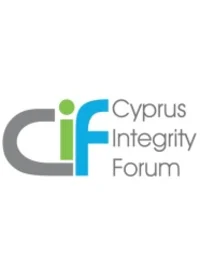For the last year I have been in a role working to create what it means to be a disruptive leader, a leader of innovation and change in a large, trusted and old organisation loved for its origins and trusted behaviour.
Not quite 12 months in, and so much has suddenly happened. The world has changed rapidly, and now I am leading in an environment where I am no longer creating the catalyst for change, but trying to keep up with the change so that we can plan for the future. A future becoming known as the ‘new normal.’
Last week a colleague and a friend sent me a superb article from
Esquire about our short to medium-term future. There was a standout phrase in
there: “In the next ten months we will see change that was previously going to
take ten years to happen.”
This quote was applied to ‘life’ in general in a pandemic
world and its after effects, but if we apply it specifically to healthcare
change and evolution, it becomes even more applicable. No matter whether its setting
up the Nightingale hospitals, moving at the speed of light to virtual primary care,
creating new paper-light capabilities in Emergency Departments, or new ways of
sharing large sets of information. Leadership of every type and style has been
flexed in a few short days and weeks to ‘fix’ things that previously felt
almost undoable!
I have a twist on the quote, though, that I am trying to be
mindful of. It goes something like this: “In the next ten days we will make
decisions that will see change happen in the next ten months, this change will
have an impact for the next ten years of everything!”
I want to adopt this slightly evolved statement as my own
personal mantra because I have a worry. We are looking ahead just enough to see
an immediate solution to immediate problems, but, once we have that solution to
the problem, we need to also be able to plan for what a future normal looks
like. And that’s harder than it was before because nobody knows what normal
looks like or feels like anymore. Our guessing has to be built on evidence that
simply has not been collected or thought of before.
New Noise
Have you noticed – as dawn breaks in our new world, the cacophony of birdsong seems so much more amplified? I am certain some of this is due to the human race now staying at home and therefore the birds’ own language can be heard clearer by us. But I also believe that the morning birdsong is amplified because they too can now can hear each other over greater distances, and therefore the travel of noise (of bird news) is much greater. The birds are now singing from ‘one’ song sheet.
In these new days of innovation at a pace none of us dreamed
of, I believe that collaboration is now more possible because our ‘noise’
travels more clearly and is focussed on a great deal fewer things to achieve.
Like the morning bird call, we are now all treated to hear each other more
clearly. I sit on a large NHS technologists’ WhatsApp group – a bunch of the
brightest and friendliest minds that exist in the system, working together to
support each other, to poke fun at each other and to make stuff happen. The
current crisis has been such a catalyst for this group, the dreams they knew
would make a difference are now realities, collaborations that previously would
have taken legal and commercial teams months to agree have been created over a text
message, and suddenly digital change, the disruption for good is the normal.
Language Change
A new language has become part of the innovation and disruption cycle, a more positive vocabulary that feels like it has more acceptability for agility than ever before. Removing an easy ‘fall back’ into old ways is important for us to grasp now and in the medium-term future. We have to protect the positives that have come from this crisis.
Emily Maitlis opened
Newsnight two weeks ago with her views on a new set of language. She made it
clear (where so few others have done) that the virus is not a ‘great leveller.’
She brought home the truth that, ‘It’s much, much harder if you’re poor. How do
we stop it making the social inequality greater?’ She also asked that media and
ministers to stop suggesting that the virus could be fought with fortitude and
strength of character and that a change has now happened that needs to be
considered in perpetuity.
Whilst clearly the now great Maitlis had a different set of
language (and perpetrators of ‘bad’ language) in her sights, I do think
innovators and disrupters can learn something from her stance. Our new language
must not forget (or indeed stop reflecting) how hard it is to change. The
global crisis the world finds itself in has made change easier to ‘sell’ to the
C-suite as doing something feels better than no reaction at all. Let’s not
forget how easy it was to actually make the change when the winds of change
were blowing in the right direction.
Out with the Old, in with the…
So much old behaviour will be assigned to the next cultural sarcophagus for disposal in the afterlife!
The behaviour of our customers and patients has changed already. The task is understanding what can be unearthed from the old life in the new world and what will remain changed. In an article published this week, McKinsey suggest a rebirth of distance and a focus on corporate resilience and efficiency will be the trends that will impact the way we start to ‘be’ in the new world. Innovation has a place in these trends. We had already seen a focus on localisation and personalisation of service, products and experiences beginning to surface to the top, the desire to feel that your experience is personal, local and tailored just for you was a trend (if not the mega trend) in retail. That movement of customer-keeper rather than shop-keeper was there already, and innovation will add a new step of change to this because of the crisis. Acute localisation to the point of cocooning has become the norm and therefore a personalised and often digital customer (and indeed, patient) journey has become how we need to deliver.
The McKinsey report links the ability for an organisation to be both resilient and efficient at the same time, invest to grow in a considered way. This again, I think, plays to the way effective disruptive innovation was heading ahead of the crisis – test and learn with the ‘business’ and customer needs at the heart of all things new, utilise an agile approach to still enable growth and change, but in a considered and measured way that enables efficiency to be the watchword of new innovations.
And Yet a Global Response…
Then we go to the wonderful BBC interview in early April with Bill Gates. He believes the number of stages to get back to normal is significant and in the years after, the normal will need to include a supportive global response to how we help the entire world to get back to where we should be. His interview was so unbelievably good even my other half’s mum got in touch on WhatsApp to say how amazing he was. But his thought process bucks the McKinsey trend in some ways. Whilst they believe there will be a trend towards localisation and distance will become a new ‘thing,’ Gates suggests that without a unified and coordinated global response, the global inequalities left in the new normal will be even more acute than they were before. He makes a global call to reduce the ‘distance’ from country to country to protect the world as a whole. Which trend will we find in the new normal? I think we would prefer to be a global nation with the ability to act local and personal when the experience is right to do so – that, though, will be hard to put in place.
This is another route where innovation and disruption can play a part. New ways of increasing the ease of delivering social connectivity and democratising the availability of health and care and wellness solutions have to sit at the heart of a new innovation strategy in the business I am in, and now do. Disrupting the delivery of healthcare in such a way as to offer new capacity and to ease customers and patients into an acceptance of new ways of accessing and receiving high quality treatments, advice and solutions has to be a target for how we work and what our priority has to be.
Collaboration Like
Never Before
Emma Walmsley, CEO of GlaxoSmithKline, told CNBC’s Mad Money programme in mid-April that they would collaborate with their peer (competitor) Sanofi in a hugely significant ‘unprecedented collaboration’ in the search for a vaccine, in search for an answer to the global crisis!
The two companies were competitors for leadership in the development of pandemic technologies. They now are creating the relationship that will see them utilise their scale and expertise to strive to develop adjutant vaccines against COVID-19 in the hundreds of millions by the end of 2021. The CEO of Sanofi also commented that “no one company can go it alone.” The pharma business has been the pariah of the media for so long, and yet in this one collaborative move two huge, wealthy organisations created a goodwill that has not really been seen in the industry on this scale before.
Collaborative sense-making in action, leading minds coming together regardless of organisational background to try to find a new way of creating a solution to the worlds largest problem today is the ‘perfect’ example of innovation in action and what we now need to do as leaders of change to be disruptive.
New Stability
Creating the new normal will be a race to create a sense of stability. Predictions of economic shift and flex are so significant that stability is going to be hard to build for anyone and everyone.
Healthcare is likely to remain the focus of the whole global population for years to come and therefore an area that will receive support to continue to innovate. The health economics ‘catch-up’ that systems will have to play as we exit the depths of the crisis could be crippling for the delivery of all healthcare, but have significant impact on primary care and the management of long-term conditions in particular. I do think that delivery in this area will see a seismic shift in ways of working and acceptance, by patients and customers alike, of how these kinds of services are delivered all over the world. This has to be an area we can all move to focus upon, to avoid a second wave of panic and crisis not directly related to COVID-19, but related to human behaviour.
Peak to Plateau to New to Normal. But at the same time in
our innovation roles we need to be able to support our functions and
organisations survive, then revive, and then come back and thrive in that new
world. Strap in, because those words described one hell of a rollercoaster ride
for the next years to come.


![Tuberculosis Diagnostics: The Promise of [18F]FDT PET Imaging Tuberculosis Diagnostics: The Promise of [18F]FDT PET Imaging](https://res.cloudinary.com/healthmanagement-org/image/upload/c_thumb,f_auto,fl_lossy,h_184,q_90,w_500/v1721132076/cw/00127782_cw_image_wi_88cc5f34b1423cec414436d2748b40ce.webp)




